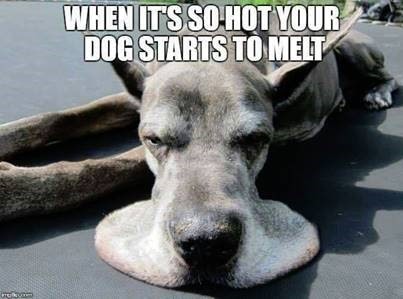Gone are the cold days of winter, along with the snow and ice. Now that the hot weather is upon us, we need to adapt our lifestyles and work habits accordingly. You should take the necessary precautions to protect yourself from the harmful effects of heat and sunlight. Working at a construction site might expose you to the severe summer sun, but caution and planning can help you prevent sunburn, cancer, and heat-related illnesses.
Sunburn occurs when unprotected skin is exposed to the sun’s ultraviolet (UV) rays for too long. Keep in mind that repeated sunburns can lead to skin cancer. The number of skin cancer cases in the United States is rising at an alarming rate. Melanoma is the most serious form of skin cancer, and it accounts for more than 75% of the deaths due to skin cancer. Sunlight is the main source of UV radiation that causes melanoma. You can protect yourself by covering up. Wear clothing that does not transmit UV light. Use sunscreen with an SPF of 15 or higher. Try to limit your exposure to the sun during the hottest part of the day.
Hot weather also increases your chances of developing a heat-related medical condition. Heat cramps, heat exhaustion, and heat stroke are common during the hot summer months. You should be aware of the symptoms:
- Heat cramps: symptoms include painful muscle spasms usually following strenuous work.
- Heat exhaustion: symptoms include headaches, weakness, nausea, vomiting, fainting, and pale, clammy skin.
- Heatstroke: symptoms include dry, pale skin; no sweating; hot, red skin; seizures; and loss of consciousness.
- These are some of the things you can do to reduce the possibility of heat-related illnesses:
- • Avoid wearing heavy clothing that will hold in body heat and make it difficult for perspiration to evaporate.
- • Wear enough clothing to protect your skin from direct sunlight and prevent sunburn.
- • Drink plenty of fluids but avoid or limit caffeinated beverages.
- • Perform the heaviest work during the coolest part of the day and take frequent breaks in cool, shaded areas.
- • Work in pairs and keep an eye on your partner. Watch for symptoms of heat-related illnesses.
- • Avoid eating large meals before working in hot environments.
- SAFETY REMINDER: High Temperature + High Humidity + Physical Work =Heat Illness


